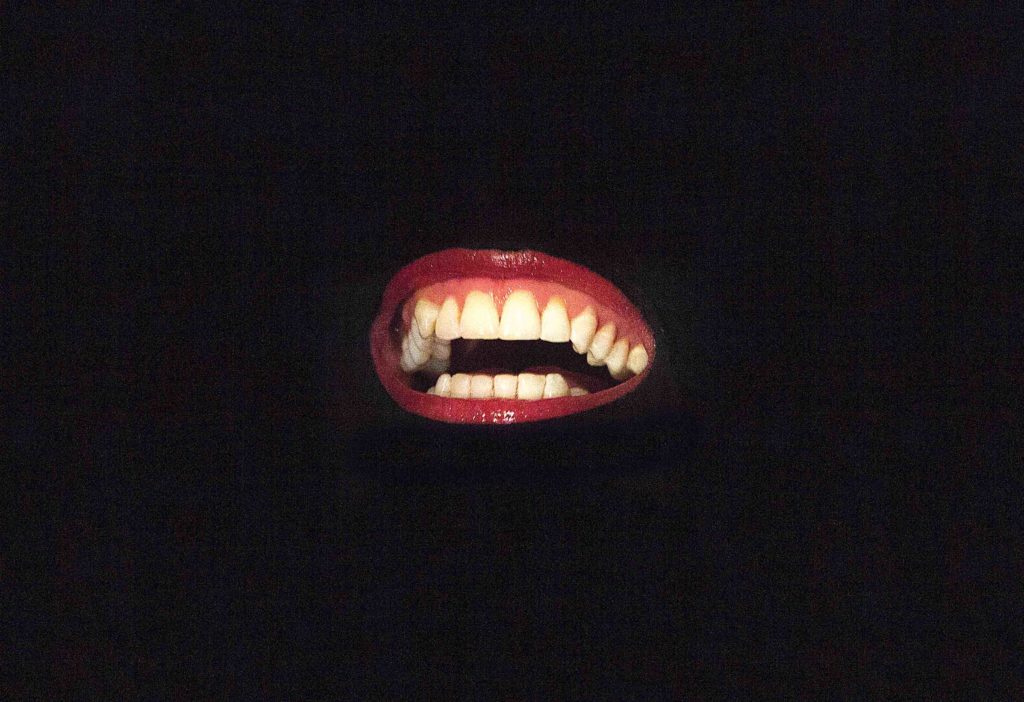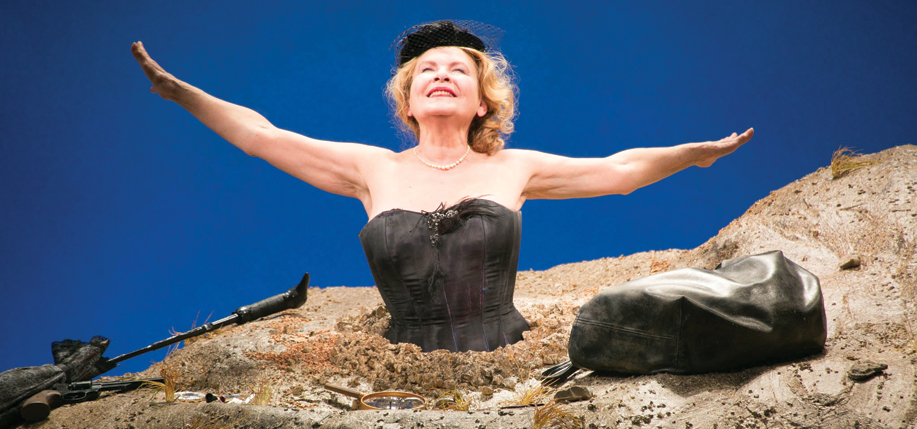“Dance first, think later. It is the natural order.” These are the words made famous by the characters of Samuel Beckett’s Waiting for Godot; characters who, Beckett delighted in suggesting, cannot move beyond their texts, never to experience the “later” in question. But what happens when dance is a vehicle for thought? When the body is infused with metaphor, filling its every beat of movement and rest with meaning? These are questions that County Westmeath actor Lisa Dwan tackled fearlessly in “The Body and Beckett,” her May seminar at Manhattan’s Center for Ballet and the Arts.
Since the age of three, Dwan aspired to a career in ballet, receiving early acclaim and a scholarship at the Dorothy Stevens School of Ballet in England. However, her path took a sharp turn when the cartilage in both of her knees gave in, making a continued life as a ballerina impossible. In this intensely vulnerable time, Dwan turned to acting and found, to her surprise, the element of dance inherent in Beckett’s scripts.
“Rhythm has a pervasive centrality in Beckett,” she said. “The balletic form can keep potency from leaking away, and using it in my interpretation of Beckett’s work allowed me to dive deep, creating a space for unfathomable phantoms.”

She performed the short dramatic monologue “Not I” in London’s Battersea Arts Center in 2005, guided by English actress Billie Whitelaw, for whom Beckett wrote the role and rehearsed with personally. The narrative of “Not I” is stream-of-consciousness, written like sheet music, and its principle role, that of a disembodied female mouth that speaks “at the speed of thought,” requires physical rigidity, which Dwan practiced by trapping her head in the bannisters of a staircase. Thirty-two years before, Whitelaw strapped herself into a dentist’s chair. Beckett conducted her as she said her lines.
In rehearsing “Not I,” Dwan recalls her bewilderment in unconsciously releasing a “tide of Irish voices,” which Whitelaw encouraged her to embrace as the “guts of the piece,” the necessarily raw and personal elements that the piece demands. Beckett, Dwan says, “is only as good as the artists that serve him” and will “hang an actor out to dry should they attempt to placate him with spectacle or gloss.” One must not act, but surrender themselves to this “vast holistic work that refuses to be served from the neck up.”
This certainly held true in James Bundy’s production of Beckett’s tragicomedy Happy Days at the Shakespeare for a New Audience Theater in Brooklyn, starring Dianne Wiest (Hannah and Her Sisters, Bullets Over Broadway) and Irish crime television actor Jarlath Conroy. The surrealist two-act play, which ran April 23 to May 28, revolves around the daily life of Winnie (a role which Wiest calls “Hamlet for women”), who chatters ceaselessly while buried waist-deep in desert wasteland, and her monosyllabic husband, Willie, who lives in a hole offstage.
Despite what one might assume, an emphasis on movement is integral to any performance of Happy Days, so much so that Wiest worked with body coach Jessica Wolf in order to bring life to the immobilized Winnie, whose stage directions (right down to each singular smile) Beckett wrote with choreographic detail. By the second act, matters have only gotten worse for the woman – she is now buried up to her neck in the sand, with only her facial expressions to engage the audience. In order to pull this off, Wolf wrote in an article for American Theater called “Stillness is the Move,” everything came down to Wiest’s ability to breathe: “Because the respiratory system is the balance wheel of the body, the vitality [Wiest] found in her breath allowed her to transform into character and have an intimate connection with the audience. Her Winnie became the vessel and mirror for the human condition.” As the half-submerged Wiest-as-Winnie fluctuates unpredictably from childlike joy to desperate sadness, that condition proves ever more bisected.
“When we are unburdened by the body and its distraction, its presence, and its responsibility are removed, we reach something else,” Lisa Dwan noted in her seminar. “This has a special meaning for women. The removal of a woman’s body means that she can play consciousness itself, and this is befitting of Beckett’s woman. She is more element than character – she is a creature.” Dwan’s recent and timely reflections on “Not I” and Wiest’s hilarious, heart-rending performance in Happy Days are evidence that Beckett’s work continues to generate new ways of seeing ourselves – sometimes disembodied – laid bare, and as essential to the universe as dancing. ♦


Excellent read. Looking forward to reading the other O’Mahony articles and future issues. Thank you